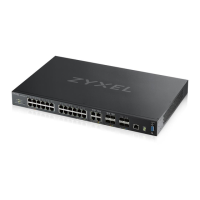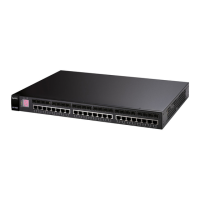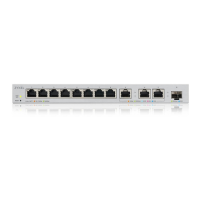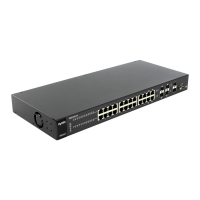Chapter 9 VLAN
XGS4600 Series User’s Guide
137
9.9.1.1 Create an IP-based VLAN Example
This example shows you how to create an IP VLAN which includes ports 1, 4 and 8. Follow these steps
using the screen below:
1 Activate this protocol based VLAN.
2 Type the port number you want to include in this protocol based VLAN. Type 1.
3 Give this protocol-based VLAN a descriptive name. Type IP-VLAN.
4 Select the protocol. Leave the default value IP.
5 Type the VLAN ID of an existing VLAN. In our example we already created a static VLAN with an ID of 5.
Type 5.
6 Leave the priority set to 0 and click Add.
Add Click this to create a new entry or to update an existing one.
This saves your changes to the Switch’s run-time memory. The Switch loses these changes if
it is turned off or loses power, so use the Save link on the top navigation panel to save your
changes to the non-volatile memory when you are done configuring.
Cancel Click Cancel to begin configuring this screen afresh.
Index This is the index number identifying this protocol based VLAN. Click any of these numbers to
edit an existing protocol based VLAN.
Active This field shows whether the protocol based VLAN is active or not.
Port This field shows which port belongs to this protocol based VLAN. In stacking mode, the first
number represents the slot ID and the second is the port number.
Name This field shows the name of the protocol based VLAN.
Ethernet-type This field shows which Ethernet protocol is part of this protocol based VLAN.
VID This field shows the VLAN ID of the port.
Priority This field shows the priority which is assigned to frames belonging to this protocol based
VLAN.
Select an entry’s check box to select a specific entry. Otherwise, select the check box in
the table heading row to select all entries.
Delete Click this to delete the protocol based VLANs which you marked for deletion.
Cancel Click Cancel to clear the check boxes.
Table 49 Advanced Application > VLAN > VLAN Configuration > Protocol Based VLAN Setup
LABEL DESCRIPTION

